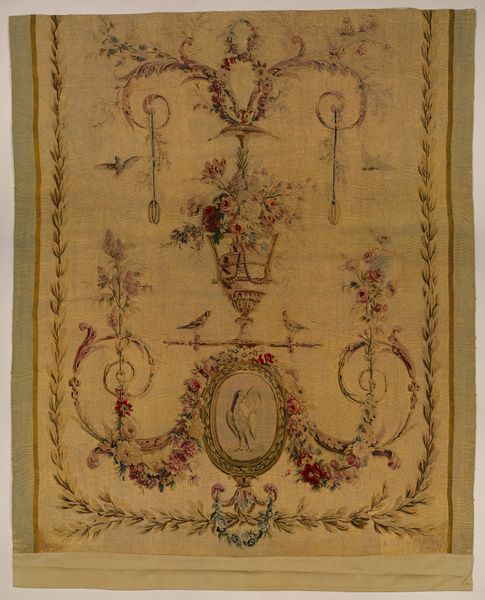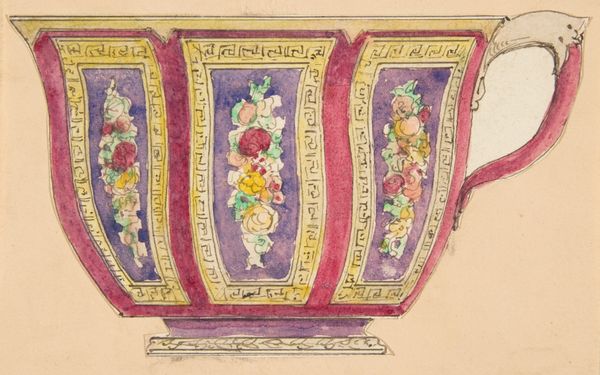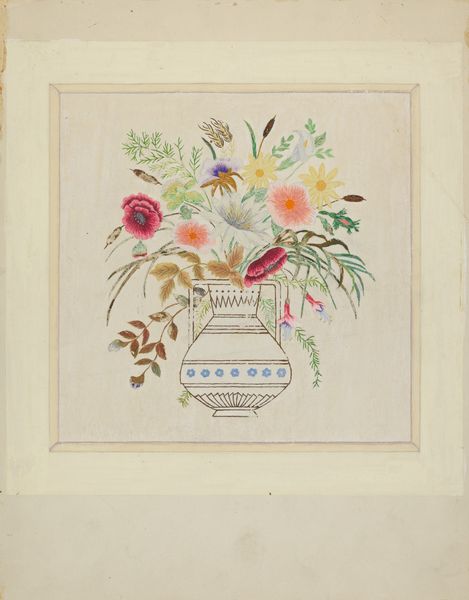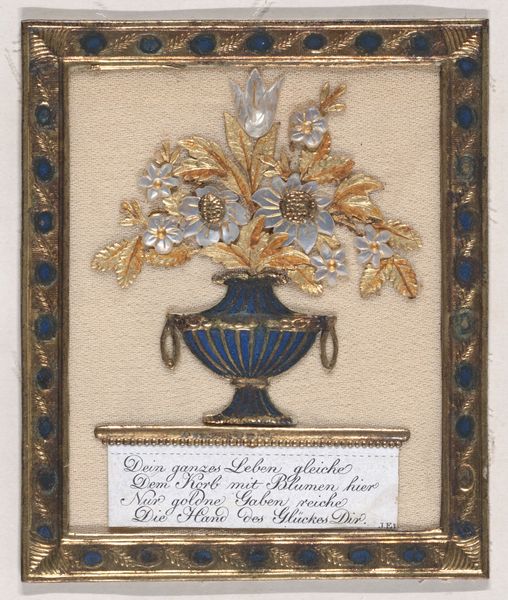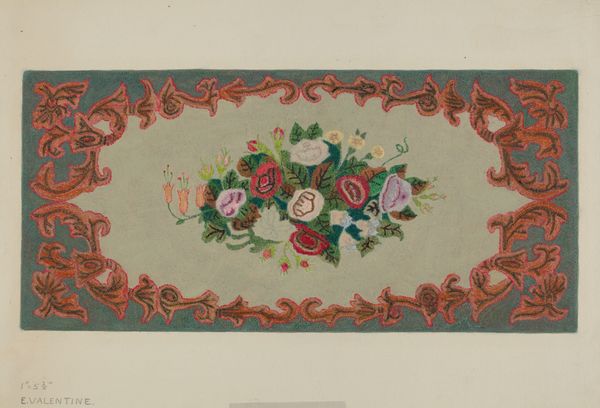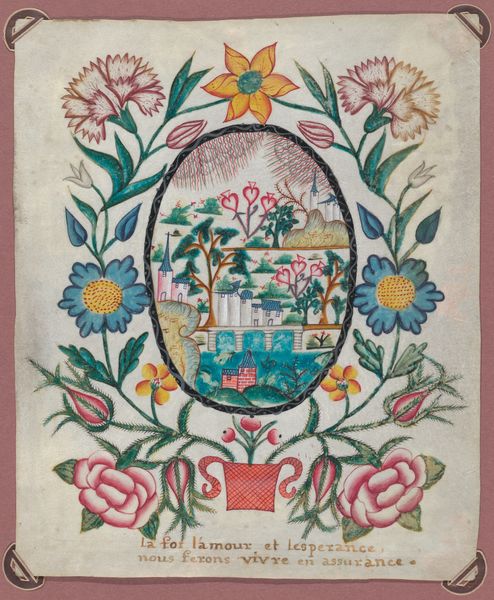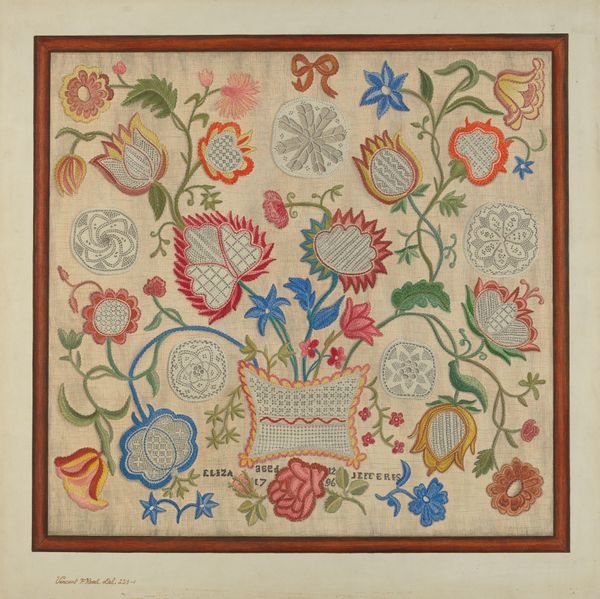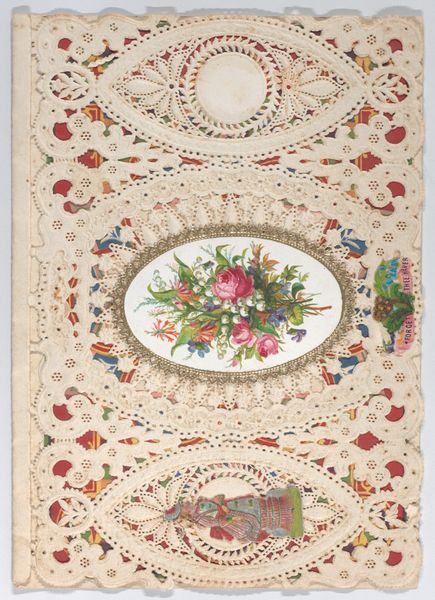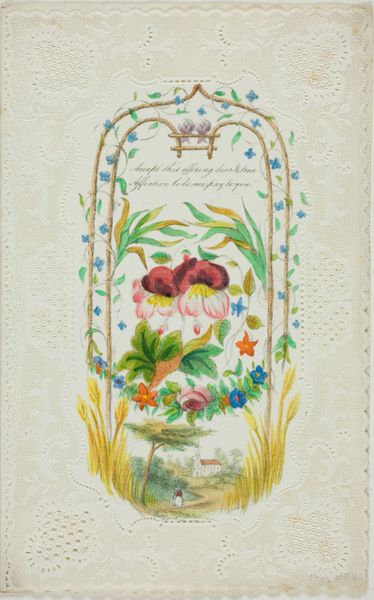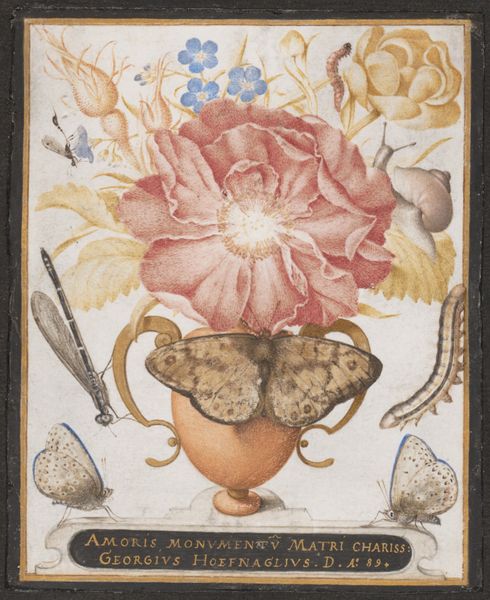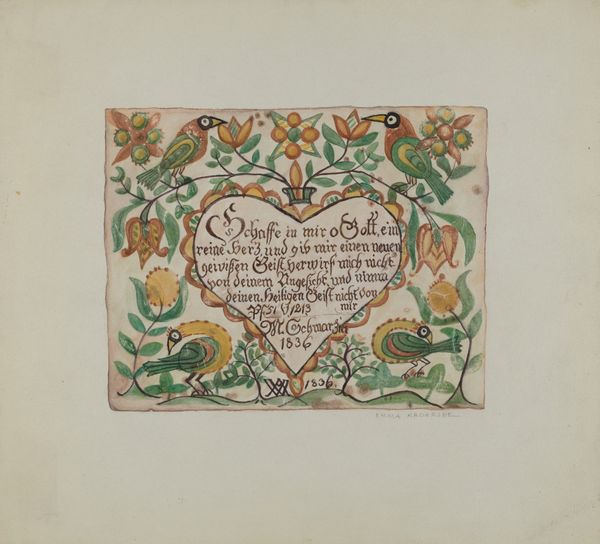
drawing, coloured-pencil, painting, print, paper
#
drawing
#
coloured-pencil
#
painting
# print
#
paper
#
coloured pencil
#
romanticism
#
decorative-art
#
decorative art
Dimensions: Sheet: 2 5/8 × 3 5/8 in. (6.6 × 9.2 cm)
Copyright: Public Domain
Curator: A certain delicate joy radiates from this piece. Editor: Indeed. Here we have "Greeting Card," made around 1821. It resides at the Metropolitan Museum of Art. Notice the blend of colored pencil, paint, and print techniques on paper. Curator: It strikes me immediately as a quintessential piece of decorative art. The symmetry, the contained floral arrangement, the framing – it's all meticulously balanced and pleasing to the eye, creating a sense of idealized harmony. The composition draws you in with the centralized floral element against the more reserved architectural structure around it. Editor: I'm interested in the labour embedded within it. Each tiny flower meticulously formed and arranged; then encased by that very precise frame. And consider that inscription. It’s written in German, likely intended for a close friend. This wasn't mass-produced, was a bespoke item crafted with skill, material know-how and intended to express real intimacy. It also makes you think about 19th century attitudes towards women's crafts: decorative arts considered 'feminine' but were nonetheless skill intensive. Curator: Agreed. I'd suggest the colour palette is working in perfect concord as well. That cobalt blue bordering against the stark silvery grey frames and offsets that central floral composition. It creates a captivating rhythm of complementary forms, emphasizing the central arrangement’s richness. Editor: Looking closely, I find myself thinking about its relationship to class and consumption too. In the early 19th century, handcrafted items like this denoted a certain level of affluence, implying leisure time, resources, and connections. This ‘Greeting Card’ signals privilege and participation within social exchange of goods, feelings and value. It underscores both artistry and cultural values through this exchange of love and sentiment. Curator: Precisely. Thinking of the symbolism embedded in the art, a formal lens directs one to look to Romanticism – the emotional outpouring reflected by the intense use of detail, the almost fantastical presentation. The flowers themselves are undoubtedly chosen for their inherent, established meanings. Editor: And from that lens, its clear its material worth goes beyond surface aesthetic. The "Greeting Card” offers insight into period crafts, social bonds, and the labor-intensive material production. Curator: Precisely! A confluence where the semiotics of style meld with material realities. Editor: A fascinating dialogue captured in colour and composition.
Comments
No comments
Be the first to comment and join the conversation on the ultimate creative platform.
